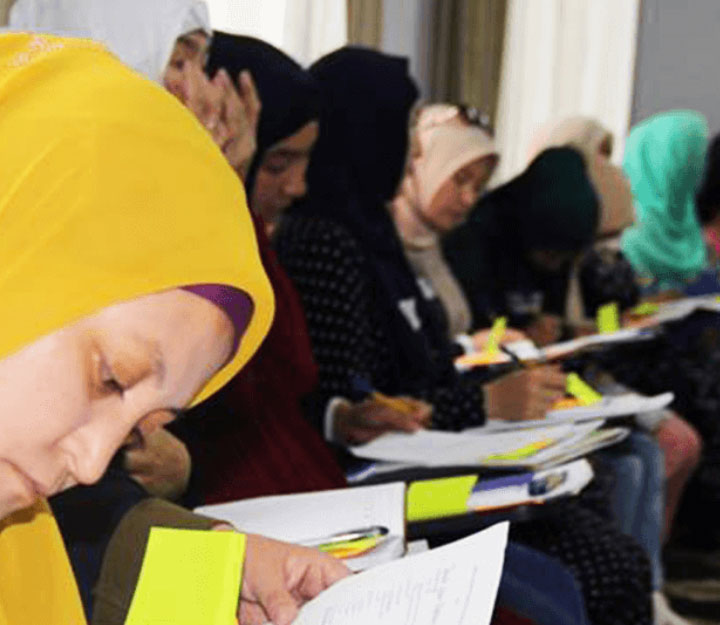Are Criminals Good Terrorists? What can we learn from research in a prison about the link between non-political crime and extremism in Kenya?
by Martine Zeuthen
Researchers and practitioners working on terrorism prevention will recognise the urge to identify what drives recruitment to violent extremist organizations (VEOs). The aim, of course, is to design prevention initiatives and to make life harder for violent actors.
In East Africa, different explanation patterns tend to pop up and gain momentum. In Kenya, for instance, there has been a particularly high interest to understand the drivers to recruitment and radicalisation to VE.[i]
This is mainly due to the rise of terrorist incidents since 2011, the year in which Kenya had begun its military operation in Somalia[ii] In this region, groups such as Al Shabaab are known to recruit across the Kenyan border and beyond for their cause. One explanation that has gained significant traction in recent years is that gang members and criminals are particularly likely to join VEOs so that they can use their skills, seek redemption for their crimes and perhaps take revenge against the state. This explanation is also current in Western contexts, where there has been much talk of a ‘crime-terror nexus’ to explain how petty criminals and former gang members have ended up fighting for Daesh in Syria and Iraq. Intuitively it makes sense that criminals, already on a morally problematic route, can more easily ‘take the next step’ up to terrorism and become a full-blown enemy of the state. But is it true?
First, there is the problem of terminology; terrorism is a crime and therefore terrorists are by definition criminals. The violence used to promote their political ideology may have a different objective than violence for other types of crime has (at least in most cases). Terrorists are seeking to promote agendas and change global power dynamics and, in some cases, to establish territory where their ideology can be implemented as law. On the other hand, many types of crime are conducted with the primary objective of financial gain, but there are other motivations, such as status or security. Although terrorism as a field continues to struggle with the role of ideology, this debate has moved forward and, in my view, understanding terrorism as an extreme form of crime helps to demystify it. There is a large body of evidence from regarding how gangs operate, how criminals facilitate their operations and how groups can indoctrinate individuals to engage in extreme actions. VEOs are not all that different and should not be treated as being qualitatively different. They can be understood, they can be managed, and their actions can be prevented.
But how might one form of crime (terrorism) use the resources of another (acquisitive crime)? I discussed with colleagues how to challenge some of the assumptions and intuitive explanations we often hear. We decided to break it down and look at the dynamics, at both the individual and the organisational level. We agreed that primary research would only be possible in a prison context, as research in the streets would potentially incriminate researchers and be too high-risk for everyone involved.
In order to undertake this research successfully, a partnership with the Kenyan Prison Service was established, and they helped define the scope of the research. Prison officers supported the processes and I must say that their openness to the research was extraordinary, and the study would never have been possible without their support and foresight.
It was a challenge to conduct qualitative interviews in prisons, as the respondents were in difficult situations: either they were not yet convicted, or they were uncomfortable talking about their situation and why they were in prison. We interviewed female and male offenders, and also remandees awaiting trial. Although our sample was smaller than we would have liked, we did not identify a clear relationship between non-political crime and extremist networks. The violent extremists whom we interviewed denied that they had been involved in criminal activity prior to their incarceration. This suggested to us that the likelihood of former criminals turning to extremism, at least among our respondents, was limited.
As a small side note, since we were studying this relationship in prisons, we did also look at prisons as a potential institution where radicalisation can take place (because this is extensively discussed in the literature). There did seem to be a system of communication within the prisons among prisoners—a form of command and control—and this could be a way for radicalising influences to spread. The prison authorities are aware and are doing their best with the policies and resources available to manage this risk.
However, back to the main discussion. What we did find was that in certain circumstances the “stars align” between a specific kind of crime (terrorism) and acquisitive crime. In some places at some times, individuals did seem to move from criminal networks into extremist groups. For instance, one juvenile participant explained how his cousin who joined Al-Shabab was initially involved in a criminal gang and how he was also exposed to VE material. However, the emphasis here is on the place. In poor, urban neighbourhoods where criminal gangs operate, there are already high levels of all kinds of violence and a strained relationship with the state in terms of security and service provision. In these locations, both gangs and violent extremist groups appear to operate smoothly, and at times they cooperate. This supports recent research by Naomi van Stapele: at certain points in time, different criminal groups have overlaps in membership.[iii] How gang members support violent extremist groups might include sharing of information, providing firearms, or supporting the production of illegal documents etc. However, our research suggests such overlaps are not a given and are highly transitory.
Reading the findings through the lens of S5 Inference Framework developed by Noémie Bouhana,[iv] this relationship is understandable. The framework sets out five different levels of terrorist involvement and engagement, one of which is ‘settings’ – places where a moral ecology of extremism is more likely to emerge. These might be places where there has been a breakdown of moral values, high levels of transience in terms of both people and goods, limited religious debate and openness, a complicated relation to the state, high levels of all sorts of violence, and where no questions are asked when it comes to securing livelihoods.
So how big is this problem really? Looking at the numbers of criminals in Al Shabaab, there is very limited public information. The UN Monitoring Group has reported that one known criminal had made it to the senior ranks of Al Shabaab.[v] That said, at the lower levels there are likely to have been others. It is likely that once an individual has joined the group and received training, their past becomes less important, and instead a sense of equality in the project and within the organisation is established. In that sense, in my view, and based on our research, the problem of criminals joining Al Shabaab might not be as big as is sometimes claimed, except for in certain places at certain times.
What this means is that work seeking to identify youth at risk of recruitment to violent extremist groups must consider that in some settings permitting violent extremist recruiters to operate, it is likely that other types of crimes are also present, and on some occasions, gang members and petty criminals are at risk of being recruited. But this is only one recruitment dynamic, in other places and other situations others exist that are equally important to seek to manage.
Therefore, when designing programmes aimed at preventing recruitment and radicalisation to Al Shabaab in these places, it is important to address grievances impacting across the networks and to support a process towards reducing the moral ecology of extremism in diverse ways. It is likely that such interventions could contribute positively to reducing several types of crime, not just terrorism, given the situational overlap. The interventions could engage at various levels, including: at the structural level, aiming to reduce the use of violence by both state and community, improve sources of income so crime does not take over, and improve relationships with the state by ensuring service provision. At the individual level they could support trauma counselling and individual processes, and at the social level seek to establish a culture of debate and discussion (including of religious issues) that is open and willing to challenge narratives propagating violence.
References
[i] Anneli Botha, ‘Assessing the Vulnerability of Kenyan Youths to Radicalisation and Extremism’, Institute for Security Studies Papers (No. 245, April 2013), pp. 1–28.
[ii] International Crisis Group, ‘The Kenyan Military Intervention in Somalia’, Africa Report No. 184, 15 February 2012,
[iii] Research forthcoming, but reference has been approved by the author.
[v] In the 2019 report by the UN Monitoring Group for Somalia and Eritrea (SEMG), it was noted that a known criminal with Kenyan nationality was recruited and trained in the Gedo region of Somalia. See UN Security Council, ‘Report of the Monitoring Group on Somalia and Eritrea Pursuant to Security Council Resolution 2060’, S/2019/858, November 2019.
About Hedayah's Blog Series
Hedayah publishes a monthly blog series covering a range of different topics related to counter violent extremism (CVE). These blogs highlight the latest trends and challenges faced by the CVE world and highlight topics that receive less attention in the international CVE space with a unique perspective.
The authors of the blog posts are Hedayah’s staff, Hedayah’s Fellows, and guest experts. The opinions expressed in the blogs are their own and not representative of Hedayah. We hope that these blogs will contribute to the conversation around CVE solutions, and push forward the quest for more research and innovation in the field.










